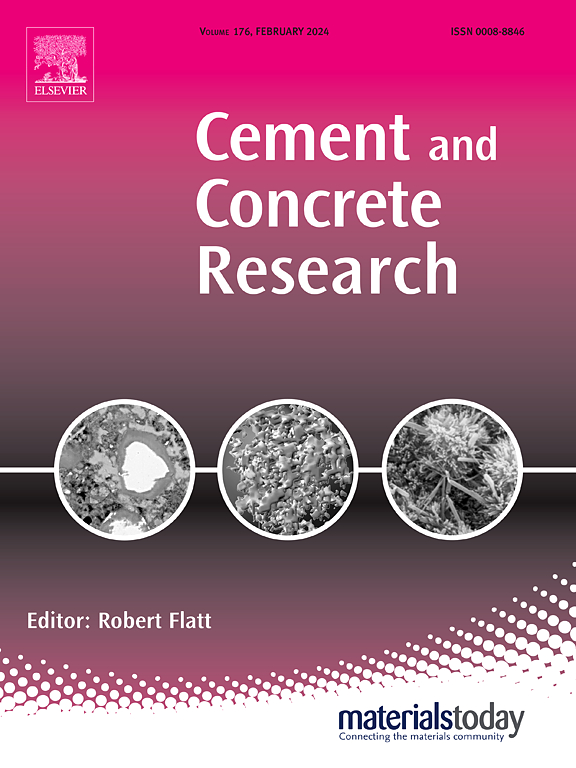Phosphate-activated basic oxygen furnace (BOF) slag: Understanding pH-driven hydration and strength development
IF 13.1
1区 工程技术
Q1 CONSTRUCTION & BUILDING TECHNOLOGY
引用次数: 0
Abstract
This study investigates the hydration behavior of basic oxygen furnace (BOF) slag in phosphate solutions across different pH levels, focusing on hydration kinetics, microstructure, and strength development. Acidic phosphate solutions trigger rapid dissolution via acid-base reactions, resulting in lower heat release, while alkaline phosphates promote sustained dissolution-precipitation reactions, prolonging hydration and increasing cumulative heat. The buffering effect of H2PO4−/HPO42− prolongs induction periods and inhibits hydrogarnet and layered double hydroxides (LDHs) formation. At early stages, C2S hydration is more pronounced in acidic solutions, whereas higher pH enhances late-stage hydration of C2S, brownmillerite, and wuestite, forming C-S-H, hydrogarnet, and LDHs. Despite similar porosities (11.9–13.9 %), strengths vary from 37.7 to 66.9 MPa due to a higher proportion of capillary pores and a larger average pore size at a low pH (pH at 4.2). The findings support using phosphate-rich wastewater to activate BOF slag, reducing phosphate discharge while developing low-carbon, cement-free binders.
磷酸盐活化碱性氧炉(BOF)炉渣:了解ph驱动水化和强度发展
本研究研究了碱性氧炉炉渣在不同pH值的磷酸盐溶液中的水化行为,重点研究了水化动力学、微观结构和强度发展。酸性磷酸盐溶液通过酸碱反应触发快速溶解,导致较低的热量释放,而碱性磷酸盐促进持续的溶解沉淀反应,延长水化时间,增加累积热量。H2PO4−/HPO42−的缓冲作用延长了诱导期,抑制了水榴石和层状双氢氧化物(LDHs)的形成。在早期阶段,C2S的水化作用在酸性溶液中更为明显,而较高的pH则促进了C2S、褐磨矿和无垢石的后期水化作用,形成C-S-H、水榴石和LDHs。尽管孔隙度相似(11.9 - 13.9%),但由于低pH (pH为4.2)下毛管孔隙比例较高,平均孔径较大,强度从37.7到66.9 MPa不等。研究结果支持利用富磷废水活化转炉炉渣,减少磷酸盐排放,同时开发低碳、无水泥的粘结剂。
本文章由计算机程序翻译,如有差异,请以英文原文为准。
求助全文
约1分钟内获得全文
求助全文
来源期刊

Cement and Concrete Research
工程技术-材料科学:综合
CiteScore
20.90
自引率
12.30%
发文量
318
审稿时长
53 days
期刊介绍:
Cement and Concrete Research is dedicated to publishing top-notch research on the materials science and engineering of cement, cement composites, mortars, concrete, and related materials incorporating cement or other mineral binders. The journal prioritizes reporting significant findings in research on the properties and performance of cementitious materials. It also covers novel experimental techniques, the latest analytical and modeling methods, examination and diagnosis of actual cement and concrete structures, and the exploration of potential improvements in materials.
 求助内容:
求助内容: 应助结果提醒方式:
应助结果提醒方式:


